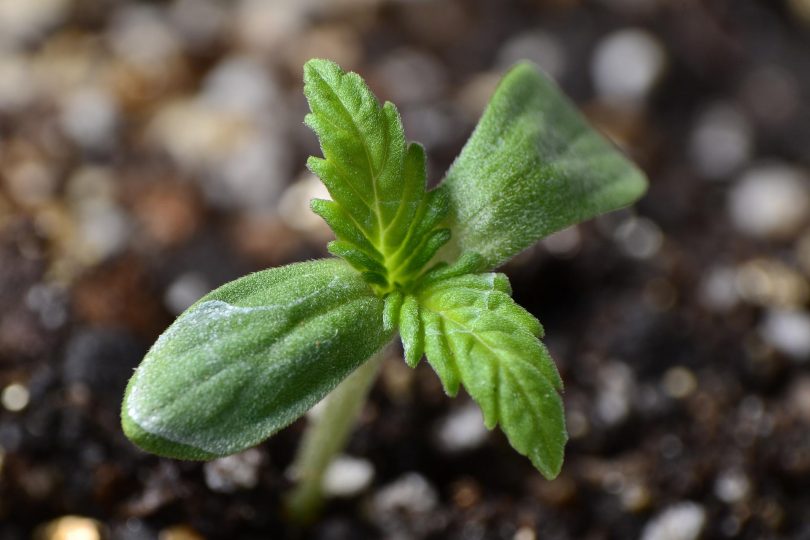The gender of a cannabis plant matters to growers since it’s the female plants that produce buds that generate cannabinoids like cannabidiolic acid (CBDA) and tetrahydrocannabinolic acid (THCA). Given this, anyone growing cannabis plants will want to understand how to grow female plants. To maximize the odds of yielding female plants, growers may choose to start with feminized seeds.
Female Cannabis Plants Produce Higher Yields of Cannabinoid-Rich Buds
Female plants are prized for their flowers, rich with trichomes containing secondary metabolites like cannabinoids and terpenes, but if male plants are allowed to mingle with female plants for long enough, they’ll pollinate the female plants and drastically lower their yields. For this reason, it’s important to identify the sex of the plant early on in order to separate them.
There’s a 50/50 chance that cannabis seeds will be female, although Sensi Seeds reports that, in practice, the ratio is 65:35 due to cannabis spreading its pollen aerially, thereby requiring less males for reproduction. Therefore, if half the seeds are unusable in terms of growing flowers, growers can either plant twice as many seeds as they intend to grow, or they may want to simply purchase feminized seeds so they’re certain that what they’ve got will produce buds.
Otherwise, it’s possible to make feminized seeds. In fact, the ability to produce feminized cannabis seeds has had a significant influence on the cultivation of the plant.
Creating Feminized Seeds
A recent study evaluated 23 treatment methods for producing feminized seeds. [1] The researchers used varying concentrations of silver thiosulfate (STS), gibberellic acid (GA), and colloidal silver, and concluded that spraying whole plants once with STS worked better than spraying just the shoot tips with STS. Spraying whole plants with colloidal silver also proved to be viable because it led to the formation of up to 379 male flowers per female plant.
After the plants were in the vegetative stage for 60 days, the researchers evaluated how different lighting photoperiods (168 hours of light, 168 hours of dark, and alternating 18/6 hours of light/dark) effected the production of male flowers in addition to the chemical treatments using STS and colloidal silver. After the treatments, a 12/12 hours light/dark photoperiod was employed in most experiments, except for when a stress-inducing photoperiod of 96/72 hours light/dark was tested.
The highest number of male flowers (339/plant) resulted after the standard 18/6 pretreatment photoperiod. The 168 hours of darkness pretreatment led to the least male flowers.
A 0.3 millimolar STS treatment combined with a 12/12 photoperiod formed the most male flowers, with the same treatment and the stress-inducing 96/72 photoperiod ranking second, producing 497 and 448 male flowers per plant, respectively.
Tests of whether the induced male flowers garnished fertile pollen proved to be fruitful, as the male flowers successfully pollinated female flowers, and produced feminized seeds.
Using Feminized Seeds Streamlines the Growth Process
Rather than gambling on the gender of the plant, growers can engineer or feminize cannabis seeds to ensure they grow to become higher-yielding, flowering female plants. This helps make growing flourishing cannabis plants much easier and more affordable.
There’s also no need to regularly check sex of the plants, since they’re likely to be female. While some plants may reveal their sex during the long vegetative state by showing pre-flowers, others will show their gender when the plants begin the flowering phase.
Either way, growers would have to play the waiting game before deciding whether to keep the plants or discard them, depending on what gender they turn out to be.
Using feminized seeds from the get-go eliminates this extra work. In this case, there will also be no need to pluck out any male plants that could compromise the crop yield.
Image source: solguerraa from Pixabay
Reference:
[1] Flajšman M, Slapnik M, Murovec J. Production of feminized seeds of high CBD Cannabis sativa L. by manipulation of sex expression and its application to breeding. Front Plant Sci. 2021;12:718092. [journal impact factor = ; times cited = ]







